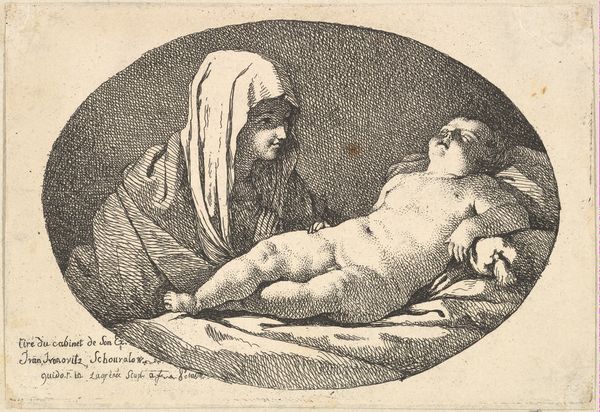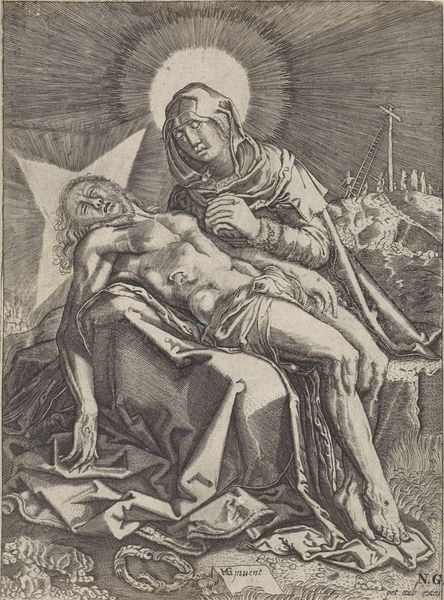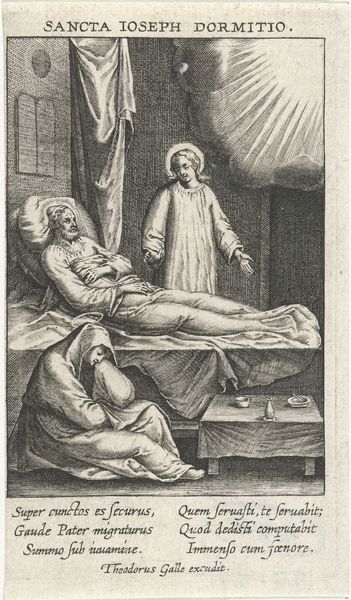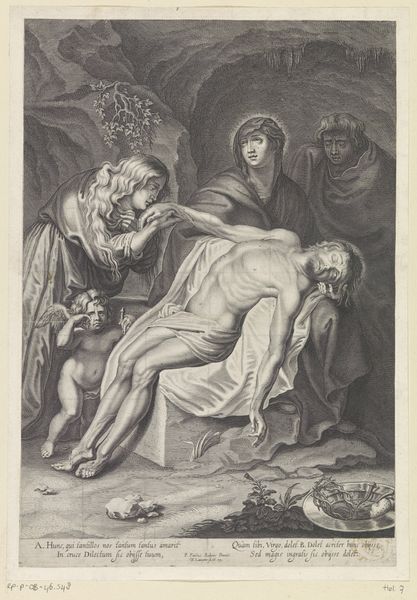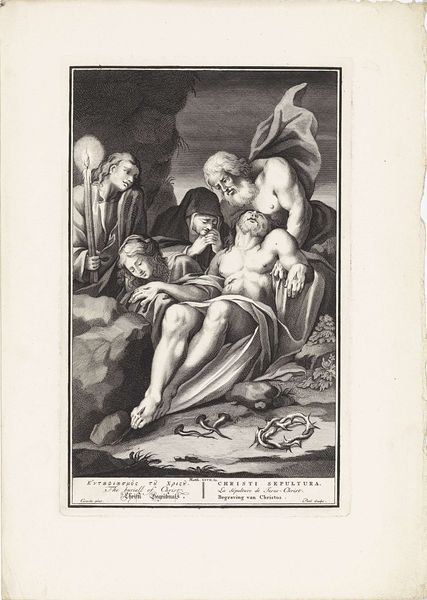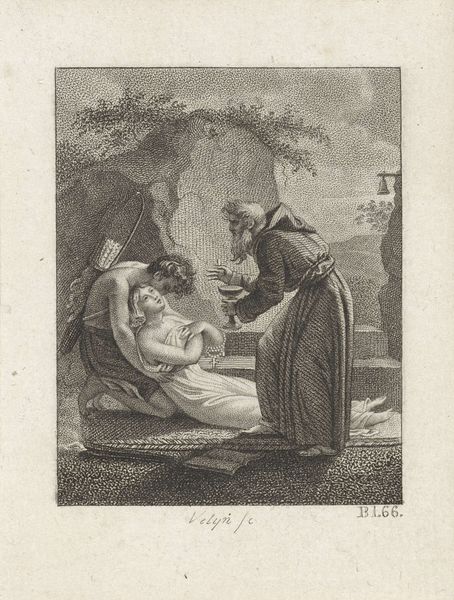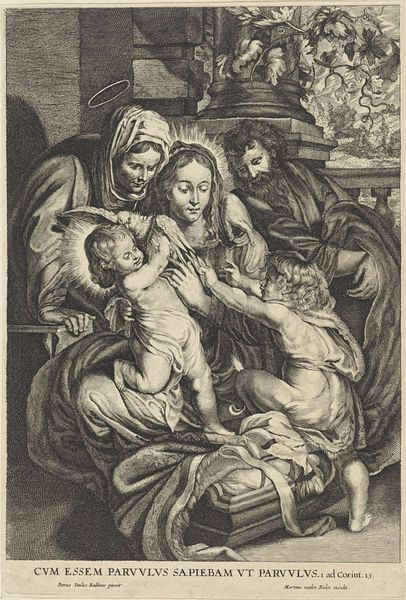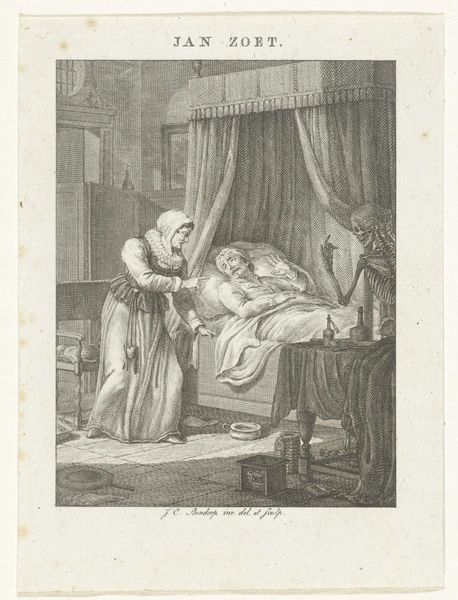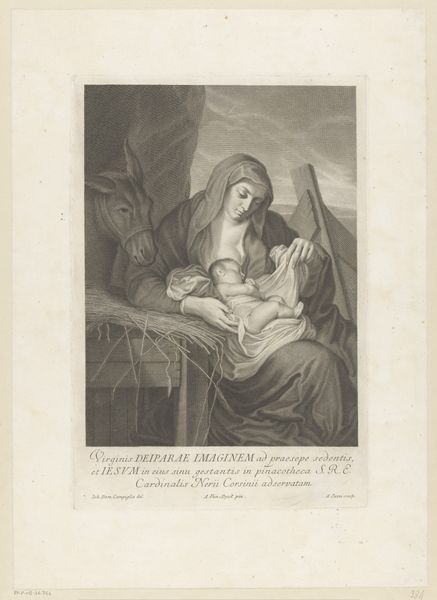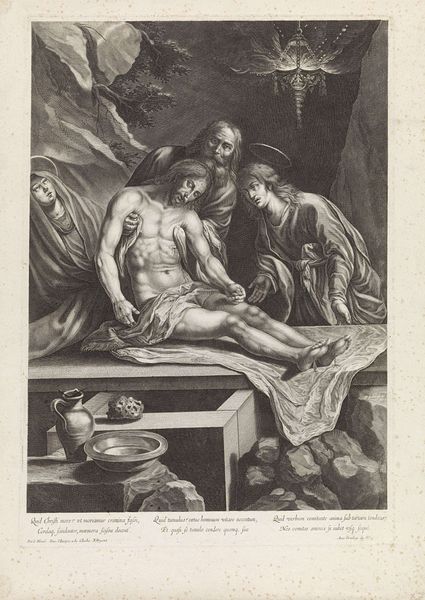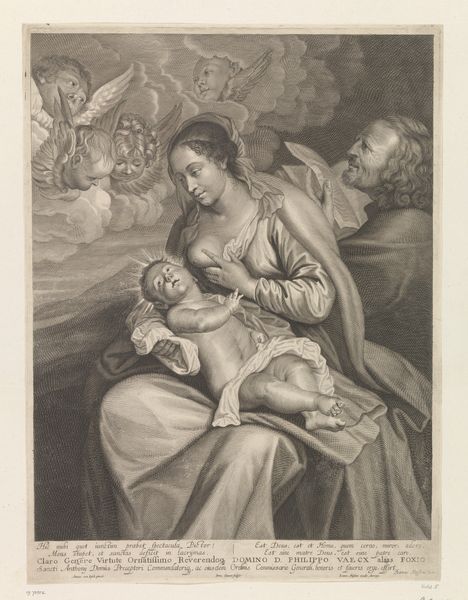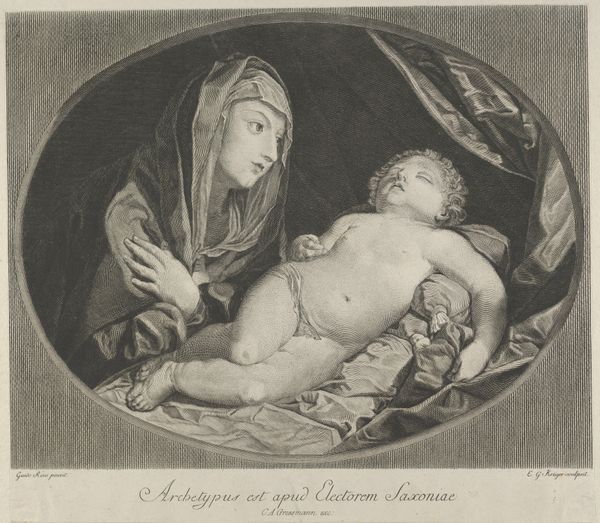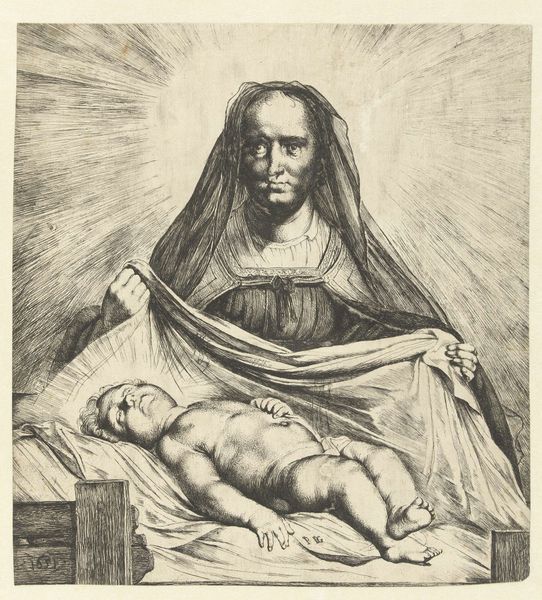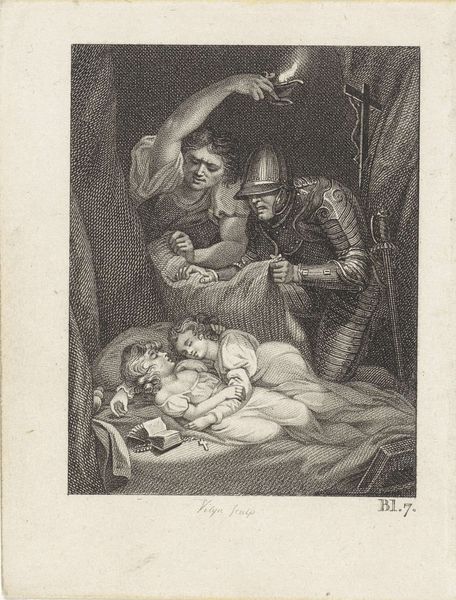
engraving
#
portrait
#
baroque
#
figuration
#
history-painting
#
engraving
Dimensions: height 317 mm, width 277 mm
Copyright: Rijks Museum: Open Domain
Curator: Before us is “Maria aanbidt het kind,” an engraving dating from the late 17th century and now held in the Rijksmuseum’s collection. Cornelis Bloemaert, a prominent figure, crafted this print. Editor: It’s striking. The circular composition and high contrast lend it an almost dreamlike quality. Mary's pose, juxtaposed with the slumbering child, creates a very tender, quiet mood. Curator: The piece clearly invokes a long tradition of Madonna and Child iconography, yet with a distinctive Baroque sensibility. Mary’s downcast gaze and folded hands invite reflection. There’s a potent mix of divine reverence and human tenderness, wouldn't you agree? Editor: Absolutely. The choice of engraving—a medium allowing for such detail in the lines and textures—heightens the emotional intensity, it almost pulls me into her solemn and reflective moment. And it speaks to the materiality of artmaking as well. The circular boundary serves to create focus but also sets a mood, giving it a contained quality. Curator: Consider too the historical context. This work served a devotional purpose and was intended to edify as well as provide visual pleasure. Mary symbolizes purity, compassion, and unwavering faith, which resonate with fundamental human values. And of course, Christ as a vulnerable infant symbolizes the ultimate sacrifice. Editor: A detail like the infant's drowsy, relaxed pose is important because it underscores humanity within a depiction meant for sacred interpretation. Notice how Bloemaert uses shading and texture to distinguish the fabric of Mary's robe from the linen covering the baby? It contributes to the painting’s overall richness, while still managing to keep the overall composition focused and legible. Curator: Indeed. And to look closer at the cultural memory it activates - an idealized relationship is created as Mary embodies both earthly and spiritual mother to Christ. We might contemplate the relationship with our own primary caregiver, the feelings of warmth, love, care, comfort and home. Editor: A testament to how a carefully chosen artistic form like engraving—paired with mindful composition—can profoundly amplify a familiar and sacred scene. Curator: It's an eloquent meditation on enduring themes that continues to provoke reflection and emotion across centuries.
Comments
No comments
Be the first to comment and join the conversation on the ultimate creative platform.
